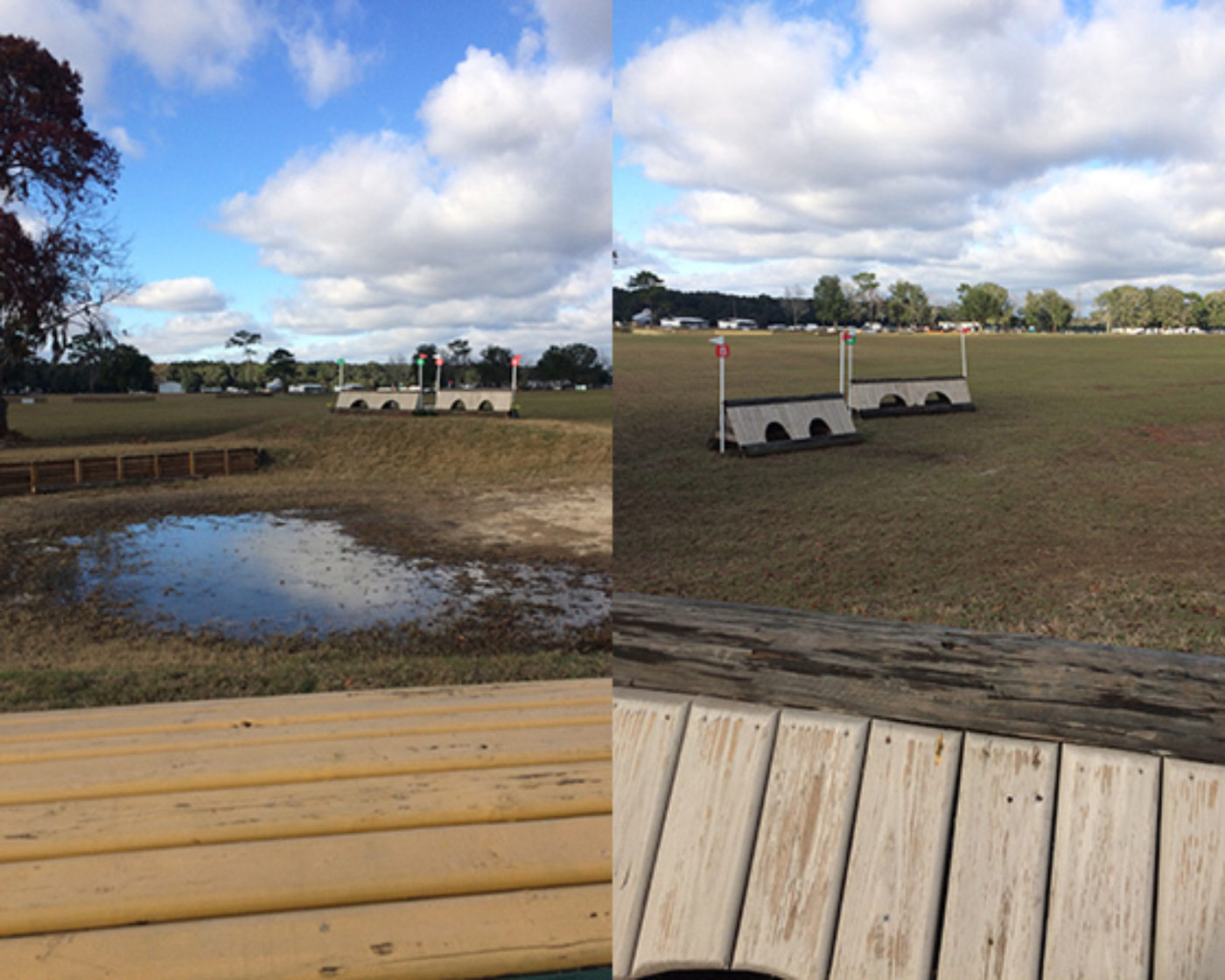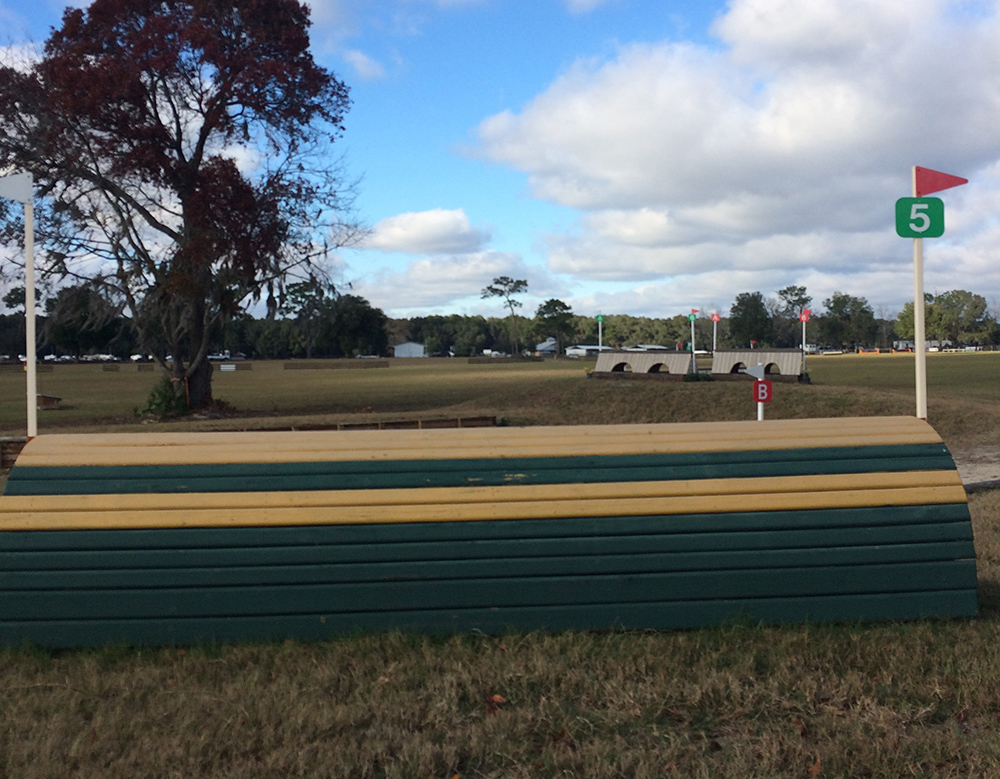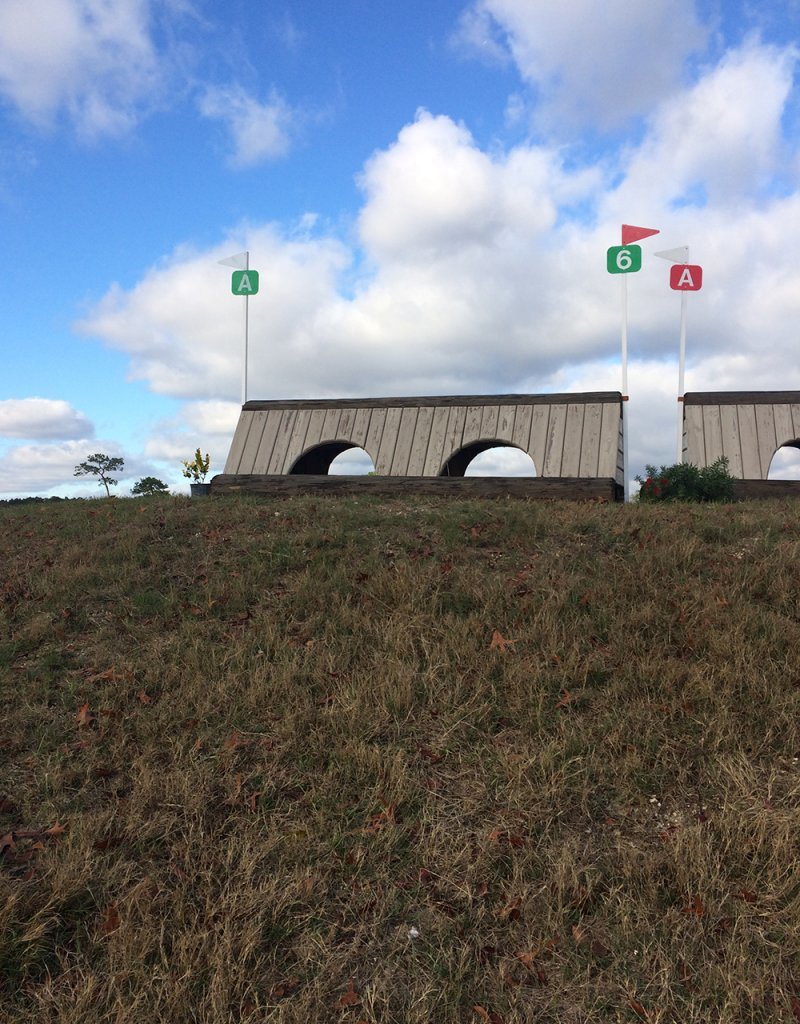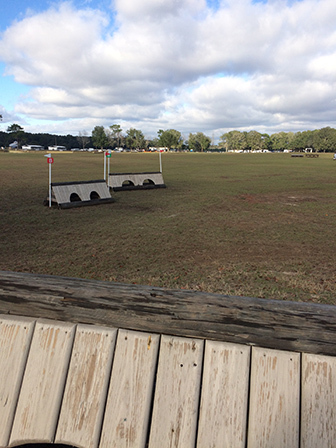Renew Your USEA Membership for the 2023 Season Today LEARN MORE

In this series, the pros walk through their approach to riding questions, fences and combinations on cross-country. This Ride Between the Flags is given by Liz Halliday-Sharp. She walks us through two Preliminary combinations seen at the Ocala Winter I Horse Trials Presented by Brian Cox Farm Team, where she and Cooley Caviar won the Preliminary Horse division.
This was a combination that we experienced at the first event of the year in Florida and it was a great question I felt for a Preliminary horse.
A few things to consider about this fence straight away were the terrain changes (we don’t always get a lot of that in Ocala!), combined with the fact the it was early in the course and the fences before were fairly open and galloping. When I walk a course I like to always consider each horse that I will be riding and how I feel they will approach the question - in this case I had three young horses with minimal or no Preliminary experience, so I wanted to make sure that they were organised and could read the question appropriately. Another thing that I always like to consider before any sort of combination like this is what the fence is that I am jumping before, and how that preceding fence will affect the combination and the approach. On this course we had four galloping-type fences and then a fairly sharp right turn to fence five which was a half round with a sloping landing, and it then lead to the next mound with 6a on top. It was important in this situation to gain a bit of control and respect before fence 4 so that you could then land with some control already, and then compress the gallop more easily and make the right turn without having to create a wrestling match with your horse.

Fence 5. Photo by Hayden Jones.
As you made the approach to fence 5, it was important to be straight and to have a shorter, but powerful stride with the horse in front of your leg. Although I felt that my horses would probably all understand the question, my rule is to take nothing for granted, so I made sure that I was really sitting up with a deeper distance and plenty of leg in case any of them had a look at the sloping ground on landing. It is also important I feel to try and give the horse his head on take off by pushing the hand forward slightly with these sort of jumps - this way the horse has more freedom in his neck and can see the sloping landing.

Up the slope to fence 6a. Photo by Hayden Jones.
Once you had successfully jumped fence 5, you then had to immediately think about keeping your shoulders back and your eyes up for fence 6a. 6a was an upright, but fairly small palisade on the top of a mound and on a bold horse this came up quite quickly. It was important to have the horse between your leg and hand and to support them up the hill, but to stay sitting up and allow the horse to find his distance to the fence. My rule with these sort of jumps on the top of a mound is to give the horse the power in the canter and the support from your leg so that the distance comes to them, rather than trying to choose a distance yourself - quite often they will be happier at a deeper distance to these sort of fences then our eye might tell us!

The view from 6a to 6b. Photo by Hayden Jones.
6b was another palisade on a slight left bend after the hill on about 6 strides. If you had ridden 6a well, then the distance and the fence came up on a good stride, and was a very fair question. On all of my horses I tried to jump 6a straight and then just sat up and quietly directed them to “b” and they all read it well.
All in all, I thought this was a great Preliminary question which asked for control and balance, and also gave the horses and riders something to think about with the terrain change. Always try and remember to think about each horse as an individual and think about how you can effectively and efficiently prepare them so that they can correctly read each question. Also, remember how much your weight and balance affects the horse, especially in these types of combinations - This brings me to my last rule for now, which is “if in doubt, sit up and put your leg on!”
About Liz Halliday-Sharp
Liz Halliday-Sharp is a unique sportswoman. Originally from California, she is now primarily based in East Sussex, England, and has dedicated her life to the pursuit of two international sporting careers.
On the one hand she is an international three-day eventer who has competed at CCI4* level, while on the other she’s a professional racing driver in sportscar and GT endurance disciplines. Liz is also an experienced TV broadcaster and presenter, and has worked with numerous different channels and companies in both the US and Europe.
Liz is lucky to now have equestrian bases in both the UK and USA. Chailey Stud Equestrian Centre in East Sussex and Horsepower Equestrian in Ocala, Florida, have helped her to create a successful business producing and selling horses, as well as providing an opportunity to compete and train in both Europe and America. Indeed, over the last few years Liz has enjoyed wins and top results up to and in three-star level competitions across both continents, and has been a member of the USA Nations Cup Team in Europe on three separate occasions. Learn more about Liz on her website, www.lizhallidaysharp.com